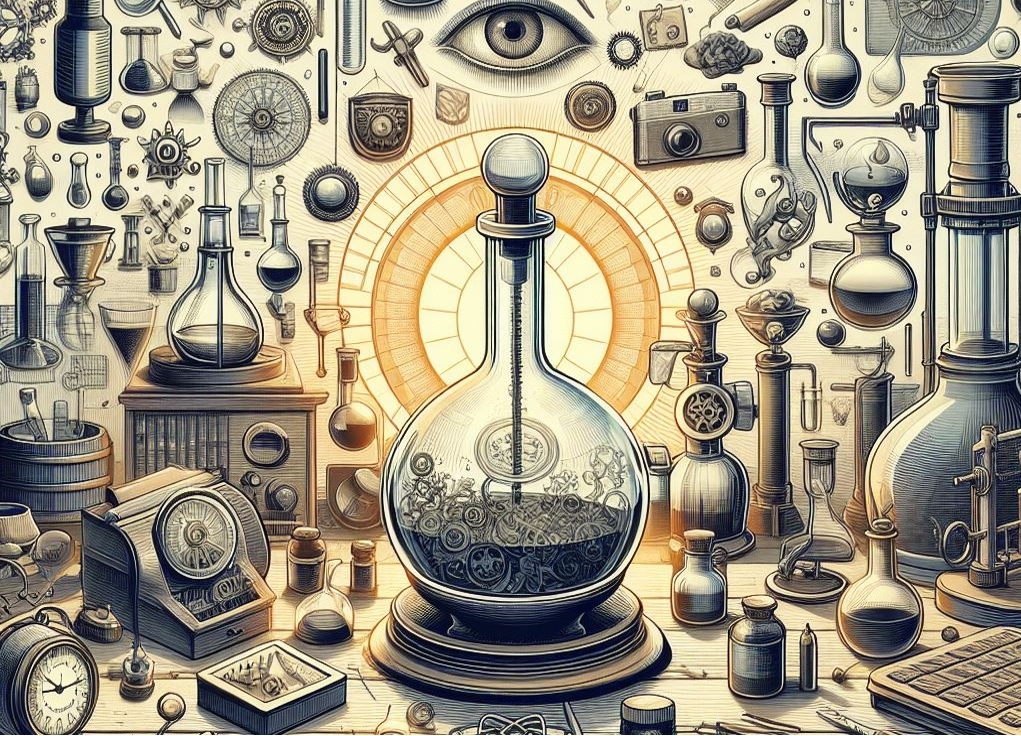Last Updated on August 30, 2024
Please find the answers to The History of Glass reading answers below, along with the passage. You have 20 minutes to answer the questions in order to achieve a high score in your IELTS speaking module.
| 1. obsidian | 5. Romans | 9. True | 13. False |
| 2. spears | 6. lead | 10. False | |
| 3. beads | 7. clouding | 11. Not Given | |
| 4. impurities | 8. taxes | 12. True |
In this blog, you shall find the answers to the History of Glass passage that usually comes in the IELTS reading section. Here, you will also find explanations behind the answers so that you can assess where you lack. Ensure that you remain attentive throughout in order to achieve the best band in IELTS.
The History of Glass Passage
Employ some reading techniques such as skimming and scanning to read the following passage and answer the questions. At the end of the practice test, you can find The History of Glass IELTS reading answers.
The History Of Glass
A.Glass has been used by man from his earliest origins. Historians found that obsidian, a type of natural glass, has formed in places, like in the mouth of a volcano, as a consequence of the intense heat of an eruption melting island, which was used as tips for spears. In 4000 BC, archaeologists discovered evidence of man-made glass, which took the shape of glazes used for covering stone beads. With the covering of the sand core and the layer of molten glass, the first hollow glass container was made.
B.From the 1st century BC, the most common method to make glass containers is by doing glass blowing. As the raw materials contain impurities, the glass that was made at that time is highly coloured. Methods to create colourless glass were developed during the first century AD, and it was then tinted by adding the colouring materials. Romans are the ones who took the secret of glass making across Europe, during this century. But, they protected the glass making skills and technology, still it spread throughout Europe and the Middle East after their empire was ruined in 476 AD. From the 10th Century, the Venetians earned reputation on making the glass bottles with technical skill and artistic ability and most of the craftsmen in the italy’s cities set up the glassworks throughout Europe.
C. When the English Manufacturer George Ravenscroft (1632 – 1683) invented the lead crystal glass, it became a major mark in the history of glass. He added the lead in the raw materials during the process of glass making to counter the clouding effect that occurs in blown glass. The new glass he introduced has the following qualities: softer, easier to decorate, higher refractive index, has the brilliance and beauty and it has become an important glass to the optical industry. Optical lenses, astronomical telescopes, microscopes have become possible only because of the invention of Ravenscroft.
D. In Britain, after rescinding the Excise Act in 1845, the modern glass industry began to boom. Heavy taxes were placed on the amount of glass melted in glasshouses, before that time and increased continuously from 1745 to 1845. In 1851, at the London’s Great Exhibition, Joseph Paxton’s Crystal Palace marked the beginning of glass as a material used in the building industry. This path breaking new building has increased the usage of glass in public, domestic and horticultural architecture. As science and technology began to advance and develop, glass manufacturing techniques also improved.
E. From the year of 1887, when HM Ashley introduced a machine in Castleford, Yorkshire, England, which is capable of producing 200 bottles per hour. It is produced more than three times faster than any previous production methods. In 1907, Michael Owens, who is the founder of the Owens Bottle Company, developed the first fully automated machine in the USA and installed it in its factory. Owen’s invention has the capability to produce 2,500 bottles per hour. Rapid development occurred, but, during the First World War, Britain cut off from the essential glass suppliers, and glass became part of the scientific sector. Before this, glass had been seen as a craft instead of precise science.
F. Currently, Glass making is a big business. It has become a modern, hi-tech industry functioning in an intensely competitive market where quality, design and service levels are important to maintaining market share. Modern glass plants have the capacity to make millions of glass containers per day in a variety of colours, green and brown remaining the most popular. Glass has become inseparable from modern life. You can see it in almost every aspect of our lives – our homes, our cars. Many products have glass packaging, and most of the beverages sold in glass, as are many foodstuffs, medicines and cosmetics.
G. Glass is the perfect material for recycling and concern for green issues, glass bottles and jars are becoming more popular as with growing consumers. Glass recycling is a good thing for the environment. It saves used glass containers rather than disposing it into landfill. Both fuel and production expenses can be saved because recycled glass needs less energy to melt than raw materials. The need for quarrying materials minimised by the recycling and preserves the valuable resources.
The History Of Glass IELTS Reading Questions
Questions 1 – 7
This reading passage has seven paragraphs, A–G.
Which paragraph contains the following information?
Write the correct letter, A – G, as your answer to each question.
- Mention of the first fully automated machine produces 2,500 bottles per hour
- A way to counter the clouding effect which occurs in blown glass during the process of glass-making
- Obsidian, a type of natural glass, is used for tips in spears.
- The repeal of the Excise Act in 1845 elevated the modern glass industry into big business
- Glass recycling is good for the environment
- The secret of glass making is spreaded across Europe by the Romans
- Mention of glass and modern life
Questions 8 – 13
Do the following statements agree with the information given in the Reading Passage?
Write
- TRUE if the statement agrees with the information
- FALSE if the statement contradicts the information
- NOT GIVEN if there is no information on this
8. Archaeologists found evidence of man-made glass in 400 BC
9. Glass made in the first century is very highly coloured as it contains impurities in raw materials
10. Romans spread the glass making skills and technologies throughout Europe
11. The Romans went to war with the Greeks to resolve the conflict caused by the glass
12. The invention of Ravenscroft made possible optical lenses, astronomical lenses and microscopes
13. There is no usage of glass in modern life
The History Of Glass IELTS Reading Answers with Explanations
If you wish to ace the reading section of the IELTS test, read the explanations behind the answers below in order to understand your strengths and weaknesses.
1. Paragraph E
Explanation: In 1907, the founder of the Owens Bottle Company, Michael Owens, invented the first fully automated machine in the United States and installed it in a factory. Owen’s design had the capability to produce a whooping 2,500 bottles per hour, a number that was no less than a miracle back then. Therefore, the answer can be found in Paragraph E.
2. Paragraph C
Explanation: In order to counteract the clouding effect that happens in blown glass, he added lead to the raw ingredients during the glass-making process.
3. Paragraph A
Explanation: The extreme heat of an eruption has created obsidian, a sort of natural glass that was utilized as spear tips, at some locations, such as the mouth of a volcano.
4. Paragraph D
Explanation: After voiding the Excise Act in 1845 in Britain, the glass industry saw a rapid emergence and success. Therefore, the answer is found in Paragraph D.
5. Paragraph G
Explanation: Glass recycling is beneficial for the environment as it reduces waste and cuts on unwanted labour. Hence, the answer can be found in Paragraph G.
6. Paragraph B
Explanation: As the paragraph states that Romans were the ones who spread the secret of glass making all over Europe, the answer can be found in Paragraph B.
7. Paragraph F
Explanation: Glass has become an integral item of the modern-day life. Hence, the answer can be found in Paragraph F.
8. False
Explanation: Paragraph A states “In 4000 BC, archaeologists discovered evidence of man-made glass, which took the shape of glazes used for covering stone beads.” Hence, the answer here is False.
9. True
Explanation: The glass manufactured at that time was brightly colored since the raw materials were tainted. Therefore, the answer is True.
10. False
Explanation: As paragraph B states “But, they protected the glass making skills and technology, still it spread throughout Europe and the Middle East after their empire was ruined in 476 AD.” This demonstrates that the answer is False.
11. Not Given
12. True
Explanation: As paragraph C states “Optical lenses, astronomical telescopes, and microscopes have become possible only because of the invention of Ravenscroft”, this showcases that the emergence of Ravenscroft allowed the creation of lenses and microscopes. Therefore, the answer is True.
13. False
Explanation: The line “Glass has become inseparable from modern life.” is stated in paragraph F, which signifies that glass has become an indispensable item in our globalised society. Therefore, the answer is False.
Conclusion
The History of Glass is an interesting IELTS reading passage that assesses your ability to read and understand the English language. As you can see, the tone of the IELTS reading section is highly academic and technical. While it is a student-friendly exam, the IELTS does require discipline and good knowledge of the English language to achieve the best band. If you are looking for the perfect IELTS test-prep, contact Admissify’s professional counselors today and get a dose of the IELTS experience.
Other Reading Answers to Practise:
Electroreception IELTS Reading Answers
The Origins of Laughter Reading Answers IELTS
Stonehenge IELTS Reading Answers
What’s So Funny IELTS Reading Answers





